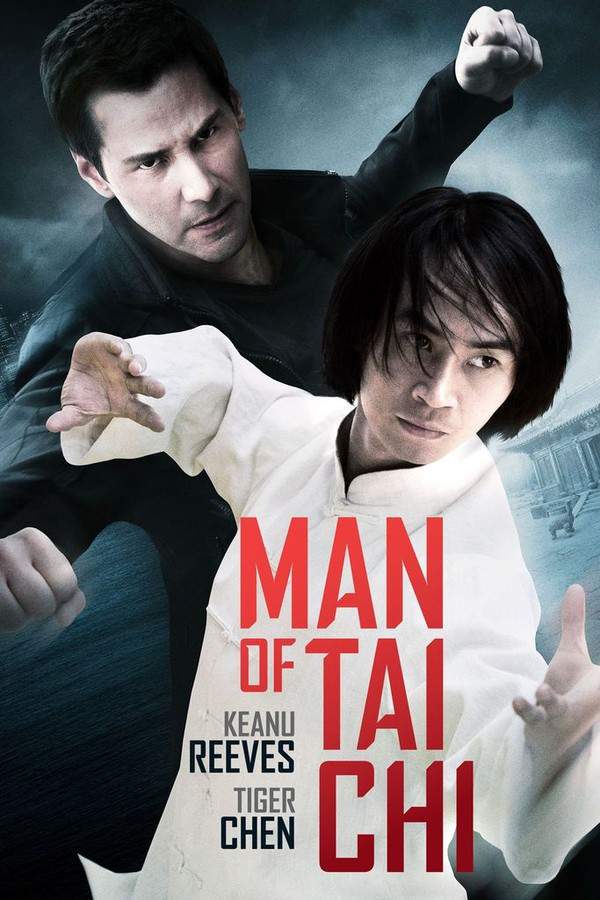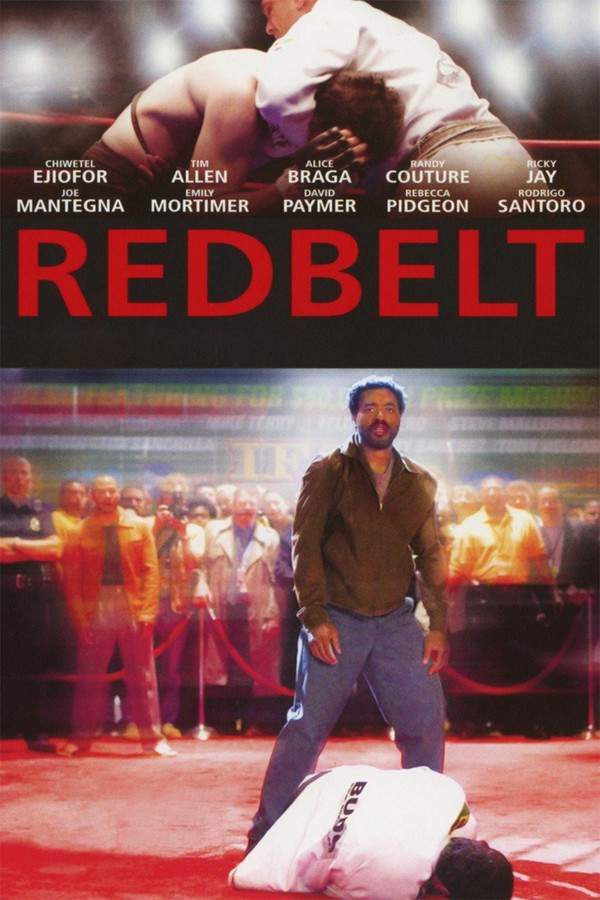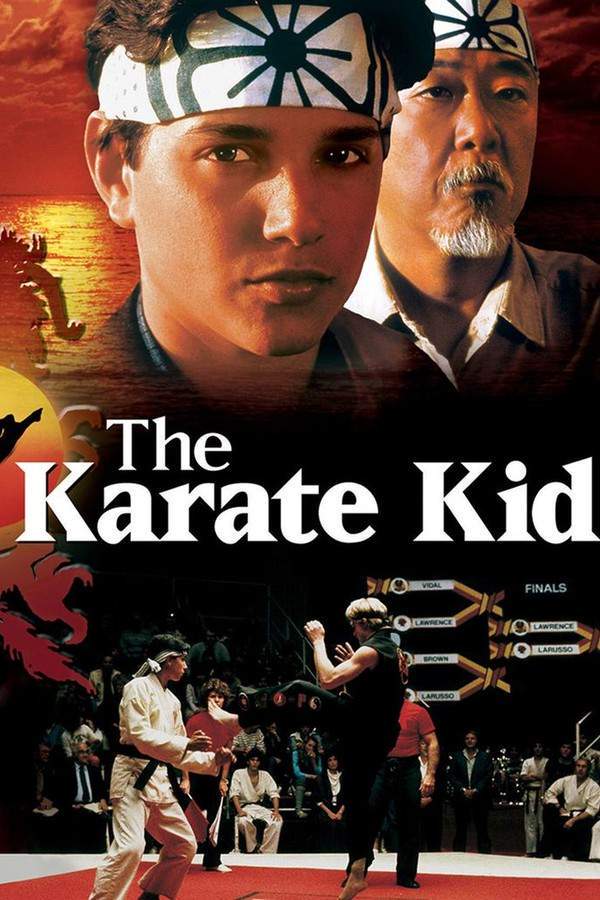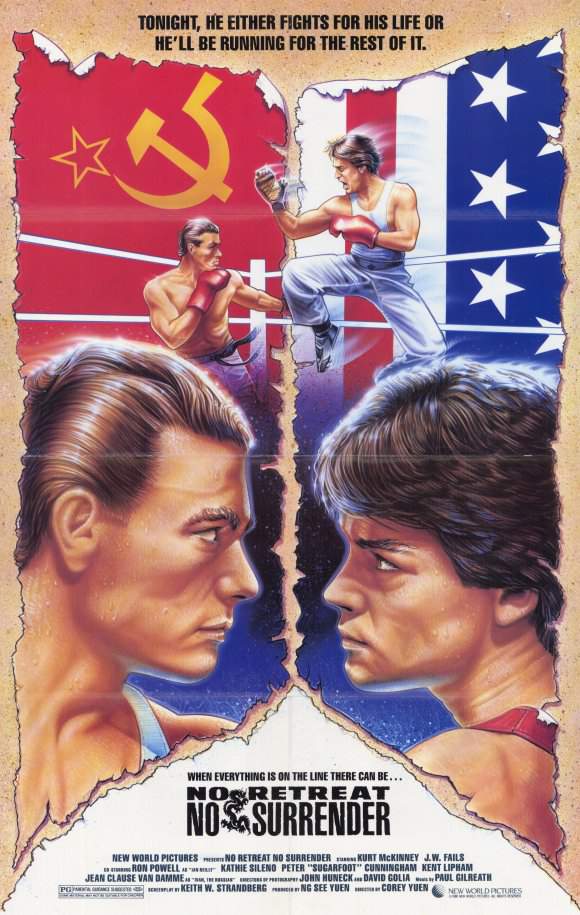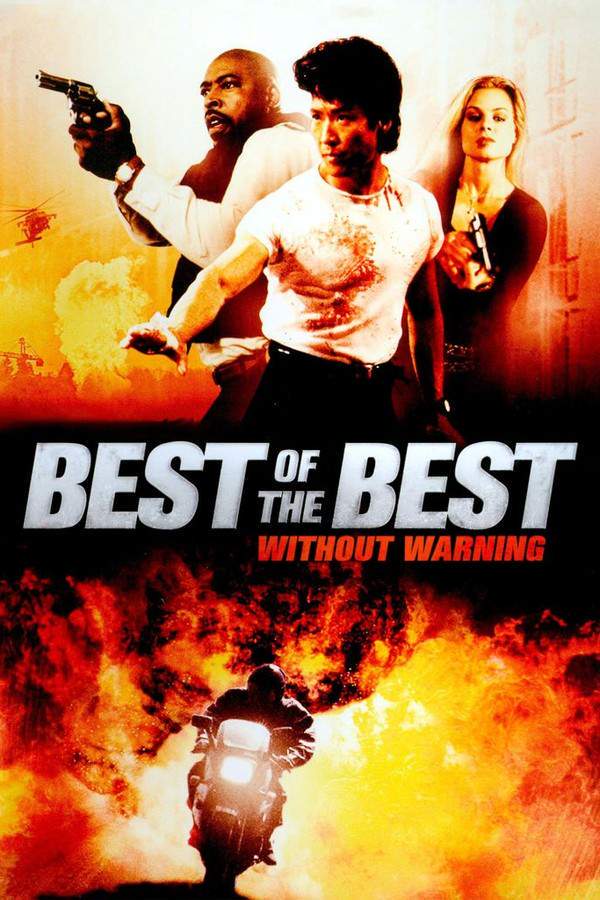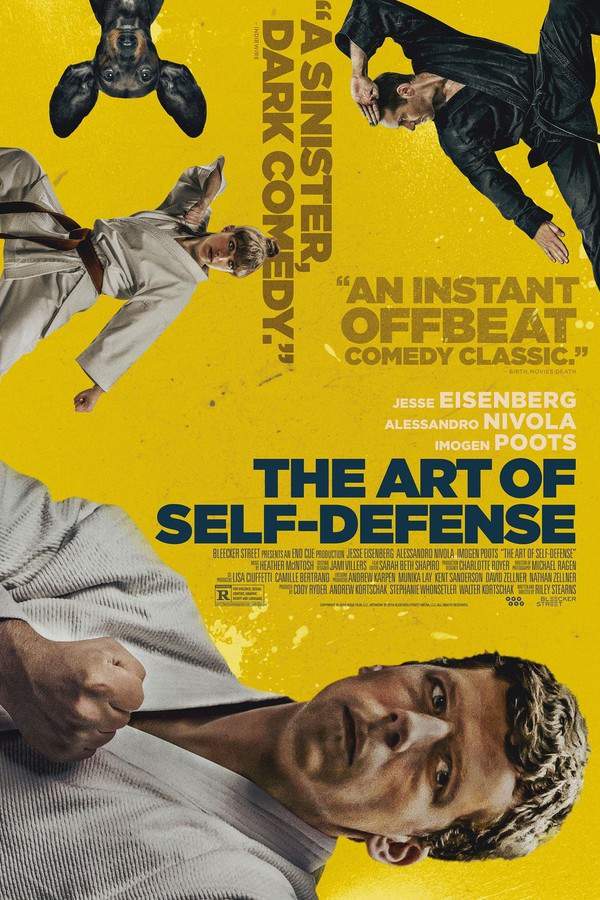
The Art of Self-Defense 2019
Directed by

Riley Stearns
Made by

Bleecker Street Media
Test your knowledge of The Art of Self-Defense with our quiz!
The Art of Self-Defense Plot Summary
Read the complete plot summary and ending explained for The Art of Self-Defense (2019). From turning points to emotional moments, uncover what really happened and why it matters.
Casey Davies, portrayed by Jesse Eisenberg, is an accountant who struggles to find his place in the unwelcoming atmosphere of his workplace. After a harrowing attack from a group he encounters one night at the supermarket, Casey takes time off to heal, but his feelings of insecurity intensify. Considering a purchase of a firearm for his protection, he stumbles upon a karate dojo run by the enigmatic Sensei. Intrigued by a free trial class, Casey decides to immerse himself in the dojo life rather than succumb to fear.
In the dojo, he meets Anna, a brown belt and the sole female instructor for children, who becomes a pivotal figure in his journey. He also forms a friendship with Henry, a blue belt student. As he begins to train, Casey impresses both his classmates and Sensei, earning a promotion to yellow belt. However, Henry and Anna are overlooked for their subsequent promotions, creating an atmosphere of unspoken tension.
When invited to the dojo’s more intense night classes, Casey witnesses firsthand the brutal side of martial arts. Henry, determined to prove himself, faces a violent reprimand from Sensei, suffering a broken elbow during a demonstration. Meanwhile, Anna refuses to be marginalized, delivering a crushing defeat to the newly promoted black belt, Thomas, in a bid to prove she deserves a higher rank despite Sensei’s dismissive comments about her gender.
Under Sensei’s guidance, Casey adopts a new persona, becoming more assertive and aggressive. He returns to his accounting job, surprising his colleagues with his newfound bravado, and even resorts to violence against his boss, resulting in his eventual termination. Sensei then offers him a position to manage the dojo’s finances, further entrenching Casey in this newfound lifestyle. During a candid moment, Casey confides in Sensei about the trauma from his recent attack, hoping for some form of retribution.
The situation takes a dark turn when Sensei informs Casey that he has spotted one of the attackers at a bar, urging him to take action. In a moment of fury, Casey severely injures the man only to discover, in a shocking twist, that he was recording the incident, having mistakenly harmed an innocent individual.
Distraught by recent events, Casey returns home only to find his beloved dog unconscious. After a grim visit to the vet, he learns it has died, a demise reminiscent of a technique he learned in his first class. Furious, he confronts Sensei, who denies any culpability but implies that Casey’s prior violent actions are being monitored.
Things spiral out of control when Casey and Anna find themselves embroiled in a scheme to attack unsuspecting individuals, only for them to discover one of their targets is an undercover police officer. In the ensuing chaos, Anna is shot, and in a moment of blind rage, Casey takes a life, all under Sensei’s approving gaze.
Determined to uncover the dojo’s sinister secrets, Casey finds himself in a restricted area where chilling evidence awaits: a crematorium, a corpse hanging by a blue belt, and video tapes that reveal Sensei and some classmates were behind the very gang that had attacked him. It becomes clear that Anna had protected him during that initial assault.
Confronting Sensei the next day, Casey challenges him to a fateful duel. Equipped for combat, he takes drastic measures, ultimately ending Sensei’s reign with a gunshot—a shocking finale to their bitter rivalry.
Now the de facto leader of the dojo, Casey fabricates a story of triumph over Sensei, asserting his dominance and exacting revenge on those who wronged him. Recognizing Anna’s strength, he promotes her to black belt, enabling her to teach a new philosophy of combat—one that champions compassion over savagery. Now, Casey takes on the responsibility of guiding the next generation, finally finding his purpose as a teacher in a place he once sought refuge.
The Art of Self-Defense Timeline
Follow the complete movie timeline of The Art of Self-Defense (2019) with every major event in chronological order. Great for understanding complex plots and story progression.
Casey Struggles at Work
Casey Davies, an accountant, feels out of place in his unwelcoming workplace. His struggle for acceptance lays the foundation for his journey of self-discovery.
Harrowing Supermarket Attack
One night, Casey is viciously attacked by a group of individuals at the supermarket. This traumatic encounter leaves him shaken and in need of time to heal.
Considering Self-Protection
In light of his trauma, Casey contemplates buying a firearm for protection. His search for empowerment leads him to a nearby karate dojo, sparking a pivotal change in his life.
Introduction to the Dojo
Casey attends a free trial class at the dojo run by Sensei. Intrigued by the atmosphere and philosophy of martial arts, he decides to immerse himself into dojo life.
Meeting Anna and Henry
At the dojo, Casey meets Anna, a skilled brown belt, and Henry, a blue belt student. They become important figures in his journey as he begins training.
First Promotion to Yellow Belt
As Casey trains diligently, his hard work pays off when he receives a promotion to yellow belt, impressing both his peers and Sensei. However, this achievements highlight the growing tension around promotions.
Brutal Night Classes
When Casey attends night classes, he witnesses the harsh realities of martial arts. The experience shakes him as he sees Henry suffer a broken elbow during a violent demonstration.
Anna's Defiant Victory
Anna challenges the perception that she cannot succeed as a female instructor by defeating Thomas, a newly promoted black belt. This victory highlights her determination and strength.
Transformation Under Sensei
Under Sensei's guidance, Casey becomes more assertive and aggressive. His newfound bravado leads to a violent altercation with his boss at work, resulting in his termination.
Dark Secrets Beginning to Unfold
After confiding in Sensei about his trauma, Casey is urged to take revenge on one of his attackers. A moment of fury leads to a devastating and wrongful act that has severe consequences.
Tragic Loss of Casey's Dog
Returning home after his mishap, Casey finds his beloved dog unconscious. A vet visit reveals the heartbreaking news of its death, propelling him into a spiral of anger and confusion.
Chaos Unfolds in a Scheme
Casey and Anna become embroiled in a scheme gone awry, targeting unsuspecting individuals. The situation escalates tragically when they discover one of their targets is an undercover officer.
Confrontation and Fatal Choices
In a fit of rage after Anna is shot, Casey makes a fateful decision and takes a life, under Sensei's approving gaze. This moment signifies a turning point in his descent into violence.
Uncovering the Dojo's Secrets
Determined to uncover the dojo's dark secrets, Casey finds evidence of a crematorium and a corpse, realizing that Sensei was connected to the gang that attacked him.
Final Duel with Sensei
Casey confronts Sensei in a climactic duel, escalating their conflict to a dramatic conclusion. In a shocking act, Casey ends Sensei's life, leaving him as the new leader of the dojo.
A New Philosophy of Combat
As the new leader, Casey promotes Anna to black belt, enabling her to teach a philosophy rooted in compassion over aggression. He finally finds his purpose in guiding the next generation.
The Art of Self-Defense Characters
Explore all characters from The Art of Self-Defense (2019). Get detailed profiles with their roles, arcs, and key relationships explained.
Casey Davies
Casey Davies is a complex character who evolves dramatically through the film. Initially unsure and fearful, he adopts a new identity over the course of his training at the dojo, becoming increasingly assertive and aggressive. However, this transformation leads to destructive choices that ultimately challenge his sense of self and morality.
Anna
Anna is a passionate and skilled brown belt instructor who serves as a pivotal figure in Casey's journey. Despite facing gender-based challenges within the dojo, she is determined to prove her worth. Her fierce dedication to martial arts and her role as a mentor emphasize themes of strength and resilience.
Sensei
Sensei is an enigmatic and manipulative figure who represents conflicting ideals about power and respect in martial arts. He influences Casey's transformation but also embodies a darker side of the dojo, ultimately leading to a showdown that encapsulates the film's themes of violence and morality.
The Art of Self-Defense Settings
Learn where and when The Art of Self-Defense (2019) takes place. Explore the film’s settings, era, and how they shape the narrative.
Time period
The film reflects contemporary societal issues regarding masculinity and violence. It explores themes that resonate with modern audiences, particularly those relating to self-defense and personal transformation, set against a backdrop where traditional martial arts conflict with current moral dilemmas.
Location
Karate Dojo, Supermarket
The Karate Dojo serves as a central hub for transformation in Casey's life. It is a place of rigorous training, camaraderie, and dark secrets, ultimately shaping Casey into a leader. The local supermarket, where Casey first encounters danger, symbolizes the unpredictability of life and the hidden threats in seemingly mundane environments.
The Art of Self-Defense Themes
Discover the main themes in The Art of Self-Defense (2019). Analyze the deeper meanings, emotional layers, and social commentary behind the film.
💪
Transformation
The theme of transformation is central to Casey's journey, as he evolves from a passive accountant into an assertive figure through martial arts. This transformation is marked by his increasing aggression, which ultimately leads to moral corruption and a struggle for identity. The dojo becomes a catalyst for his internal conflict.
⚖️
Morality
The exploration of morality is prevalent as Casey grapples with the consequences of his violent actions, challenging the notion of right and wrong in a world fueled by aggression. The dojo's dark secrets reveal a moral decay that contrasts with the ideology of martial arts, raising questions about ethics in self-defense.
🚨
Violence
Violence serves as a pervasive theme, illustrating how it transforms relationships and perceptions of power. Casey's descent into violence highlights the dangers of succumbing to aggression under the guise of self-defense. The film ultimately critiques how violence begets more violence, often with tragic outcomes.

Coming soon on iOS and Android
The Plot Explained Mobile App
From blockbusters to hidden gems — dive into movie stories anytime, anywhere. Save your favorites, discover plots faster, and never miss a twist again.
Sign up to be the first to know when we launch. Your email stays private — always.
The Art of Self-Defense Ending Explained
Unravel the ending of The Art of Self-Defense (2019) with our detailed explanation. Understand the final scenes, character fates, and unresolved questions.
In the climax of The Art of Self-Defense, Casey finally takes control by killing Sensei, who was deeply corrupt and violent, revealing that the brutal practices of the dojo were not just sanctioned but encouraged under his direction. When Casey discovers that Sensei, along with Anna and the other students, had initially attacked him as a part of their misguided attempt at enlightenment, he confronts him and shoots him in the face—an act that signifies his rejection of the dojo’s toxic and violent ideology. Afterward, Casey finds out that Sensei’s real name is Leslie and that his plans involve turning his secret recordings of brutal class sessions into a kind of twisted documentary.
Feeling that Sensei cannot be stopped through conversation or moral appeals, Casey challenges him to a duel to the death—a final act to settle the destructive cycle. When the moment arrives, Casey shoots and kills Sensei, leaving his body as a trophy and symbolically ending his reign of violence. He then assumes responsibility for the dojo, vowing to continue the teachings in his way, and appoints Anna as its new leader. This act of violence is complex: it marks a moral compromise, as Casey had to break his own code to eliminate an evil he could no longer ignore. His decision raises questions about whether violence is justified when confronting systemic evil and whether standing up for what’s right sometimes requires morally ambiguous actions. In the end, Casey’s act signifies that he has finally taken a stand—though at great personal cost—against the cruelty embodied by Sensei, embodying the film’s dark satire on toxic masculinity and the destructive pursuit of power. His victory is bitter, but it symbolizes the necessity of confronting evil directly, even if it contradicts personal morals. The ending leaves viewers contemplating whether true justice is even achievable and whether sometimes, breaking the rules becomes the only way to bring about change.
The Art of Self-Defense Spoiler-Free Summary
Discover the spoiler-free summary of The Art of Self-Defense (2019). Get a concise overview without any spoilers.
In the quiet suburbs of an anonymous American city, a shy accountant named Casey finds his routine shattered after a frightening encounter that leaves him questioning his own safety. Seeking a way to reclaim a sense of control, he stumbles upon a modest karate dojo that promises more than just self‑defence—a chance to reshape his identity. The space is bathed in the disciplined rhythm of practice mats, the echo of kiais, and the quiet confidence of its members, offering a refuge from the alienation he feels at work and in everyday life.
Guiding the newcomers is a charismatic and enigmatic Sensei, whose calm authority draws Casey in with the promise of inner strength. Under his watchful eye, the dojo becomes a micro‑cosm where discipline, camaraderie, and an undercurrent of fierce competition intertwine. The lesson hall is a place where the physical rigor of karate mirrors an internal battle, encouraging participants to confront anxieties they have long suppressed.
Among the students, Anna, a brown‑belt instructor responsible for teaching the children, stands out as both a source of support and a subtle challenge to the dojo’s hierarchy. Her presence hints at the nuanced dynamics within the club, where gender expectations and personal ambition quietly clash with the outward veneer of respectability. As Casey immerses himself in training, the contrast between his former timidity and the budding confidence cultivated on the mat grows stark, suggesting a transformative journey that may lead him beyond simple self‑defence.
The film balances deadpan humor with a simmering sense of unease, painting the world of martial arts as both a sanctuary and a place where darker impulses may linger just beneath the surface. As Casey learns to stand taller, the audience is left to wonder whether the path he follows will truly empower him—or pull him deeper into a realm where the line between protection and aggression blurs.
Can’t find your movie? Request a summary here.
Movies with Similar Twists and Themes
Uncover films that echo the narrative beats, emotional arcs, or dramatic twists of the one you're exploring. These recommendations are handpicked based on story depth, thematic resonance, and spoiler-worthy moments — perfect for fans who crave more of the same intrigue.
Featured on this page

What's After the Movie?
Not sure whether to stay after the credits? Find out!
Explore Our Movie Platform
New Movie Releases (2025)
Famous Movie Actors
Top Film Production Studios
Movie Plot Summaries & Endings
Major Movie Awards & Winners
Best Concert Films & Music Documentaries
Movie Collections and Curated Lists
© 2025 What's After the Movie. All rights reserved.


